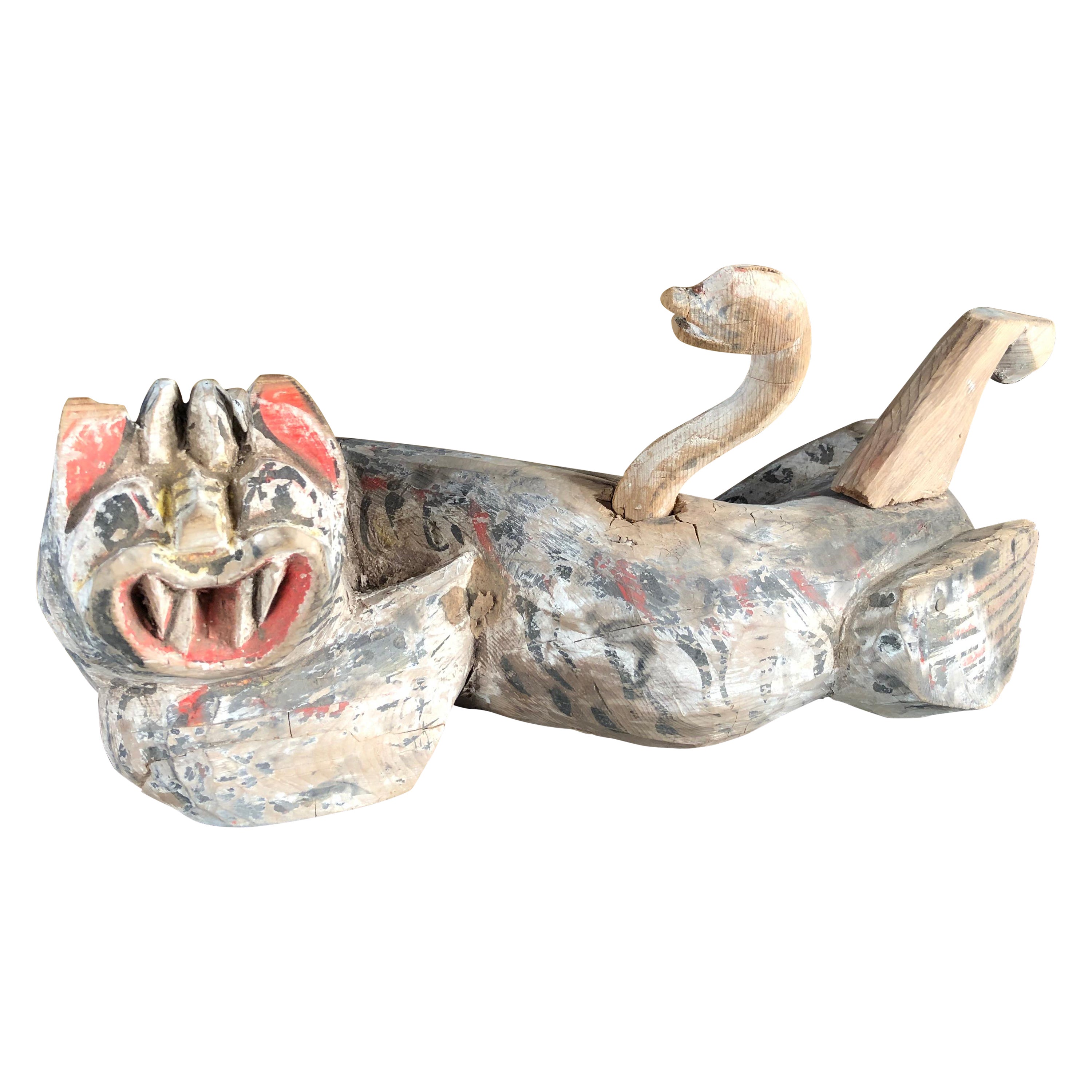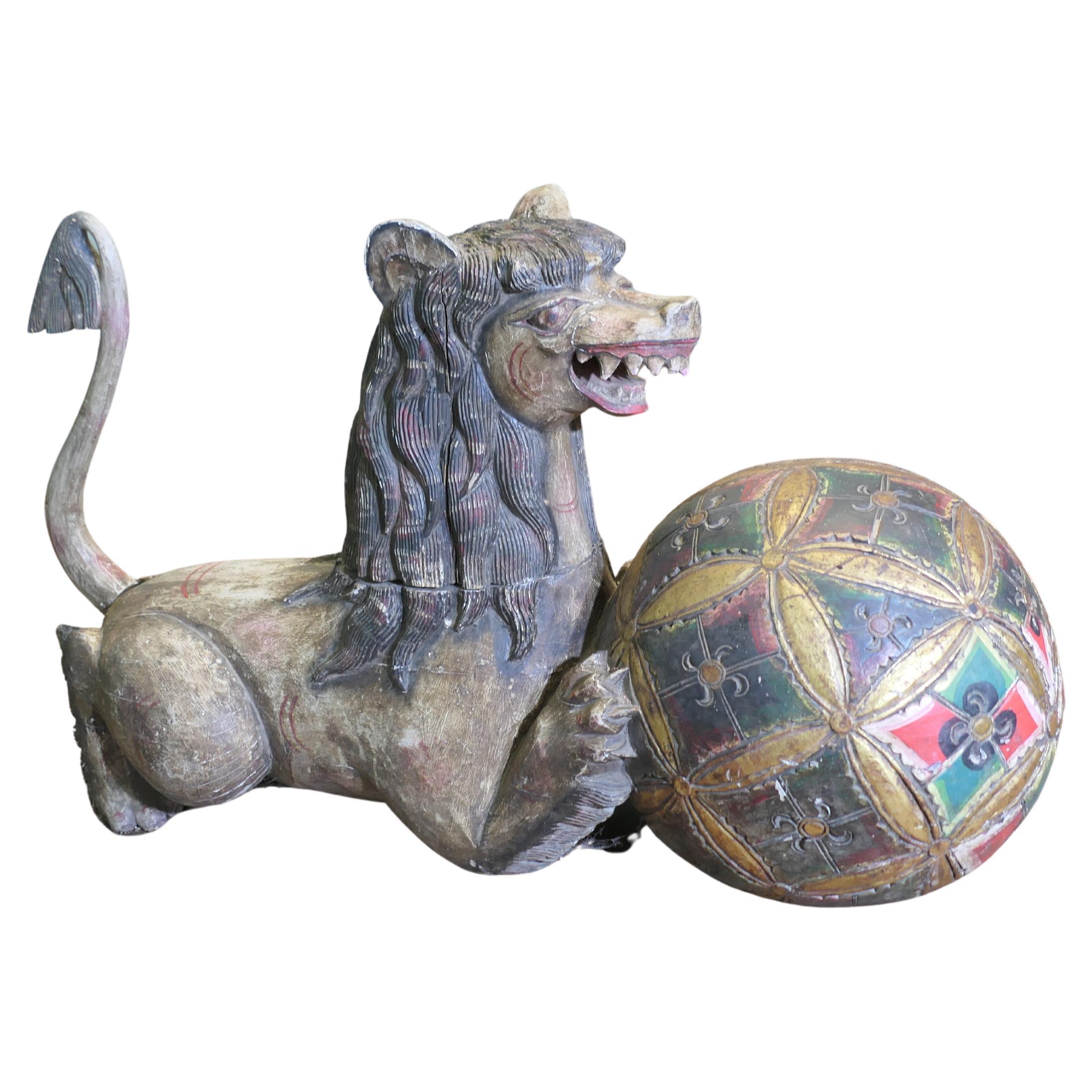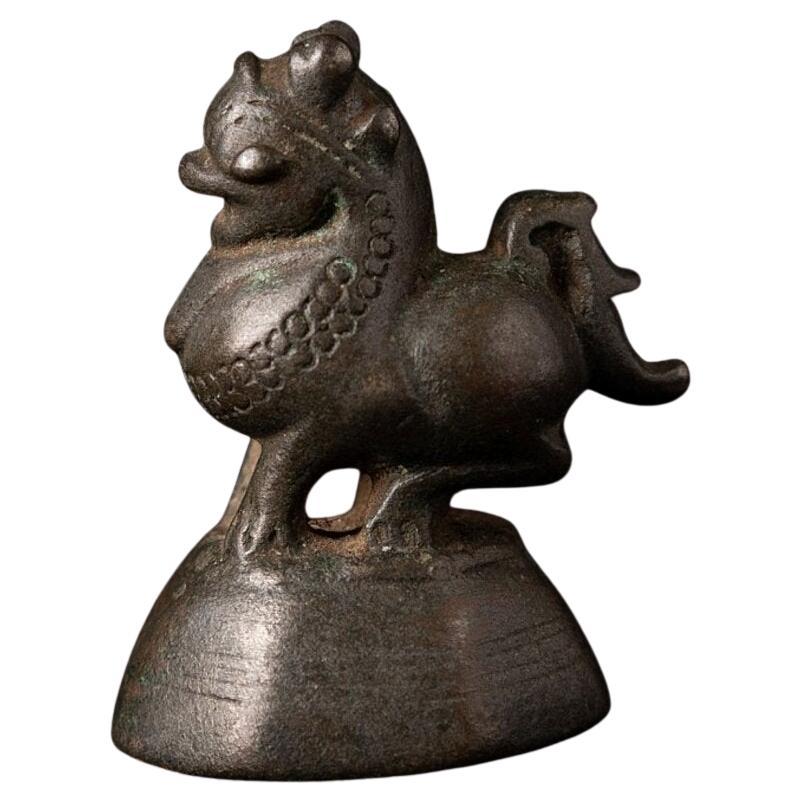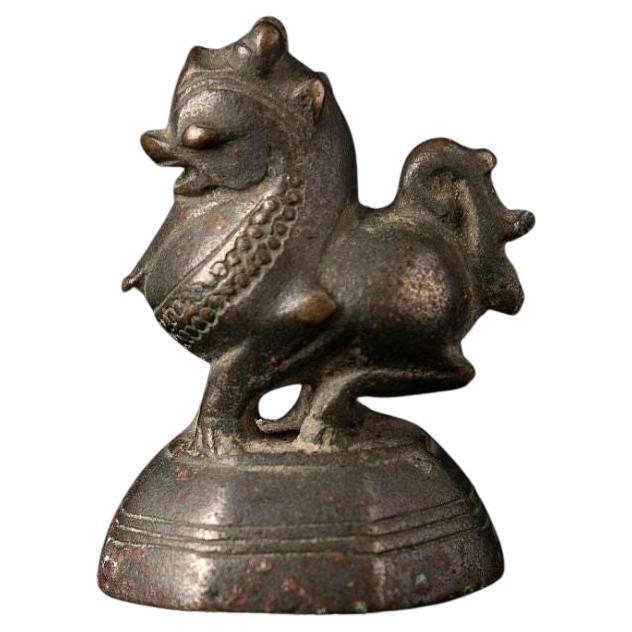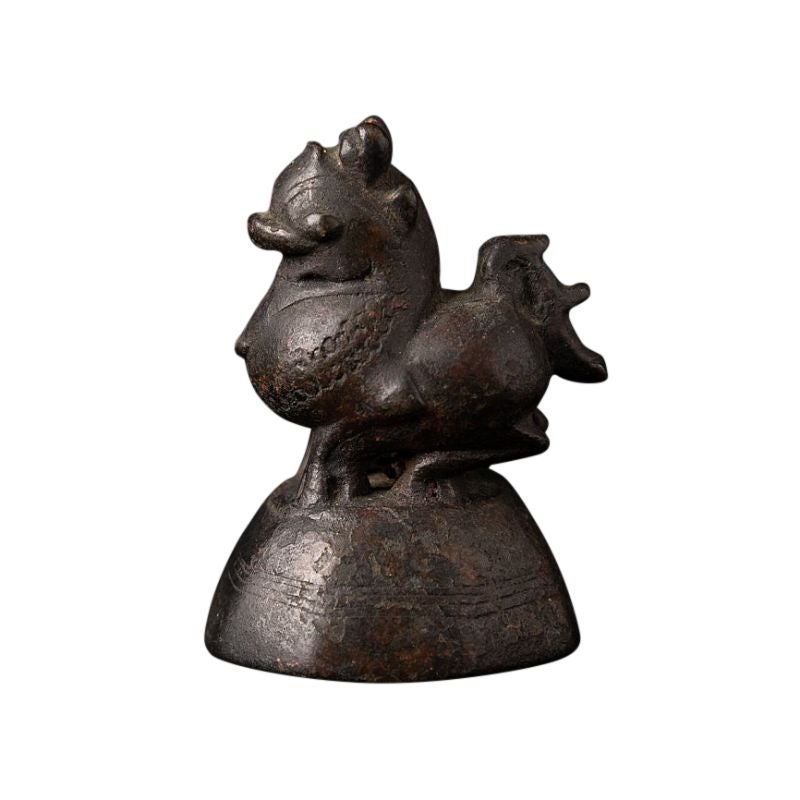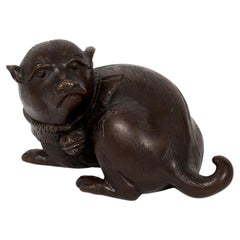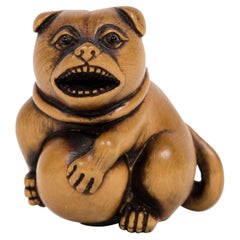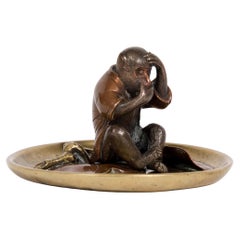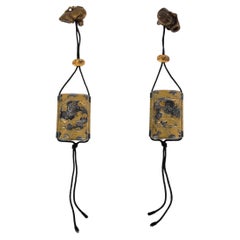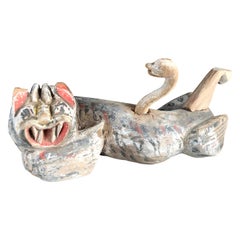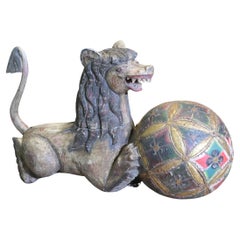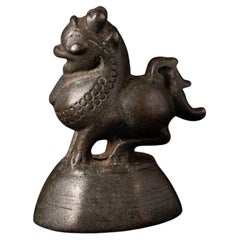Items Similar to Opium Wieght in the Form of a Buddhist lion
Want more images or videos?
Request additional images or videos from the seller
1 of 5
Opium Wieght in the Form of a Buddhist lion
$600.49
£442.26
€500
CA$816.92
A$907.78
CHF 475.69
MX$11,132.34
NOK 6,067.12
SEK 5,707.72
DKK 3,806.42
Shipping
Retrieving quote...The 1stDibs Promise:
Authenticity Guarantee,
Money-Back Guarantee,
24-Hour Cancellation
About the Item
Tiny opium weight in bonze with brownish patina in the shape of a Buddhist guardian lion, also name Fo dog, characteristic with its exorbitated eyes and an embossed and wavy mane and tail. It was use on a pan balance in the Indochina opium trade until the second half XXth century
- Dimensions:Height: 1.58 in (4 cm)Diameter: 0.99 in (2.5 cm)
- Style:Folk Art (Of the Period)
- Materials and Techniques:
- Place of Origin:
- Period:
- Date of Manufacture:1900
- Condition:Wear consistent with age and use.
- Seller Location:PARIS, FR
- Reference Number:Seller: 2024-12741stDibs: LU8311242601112
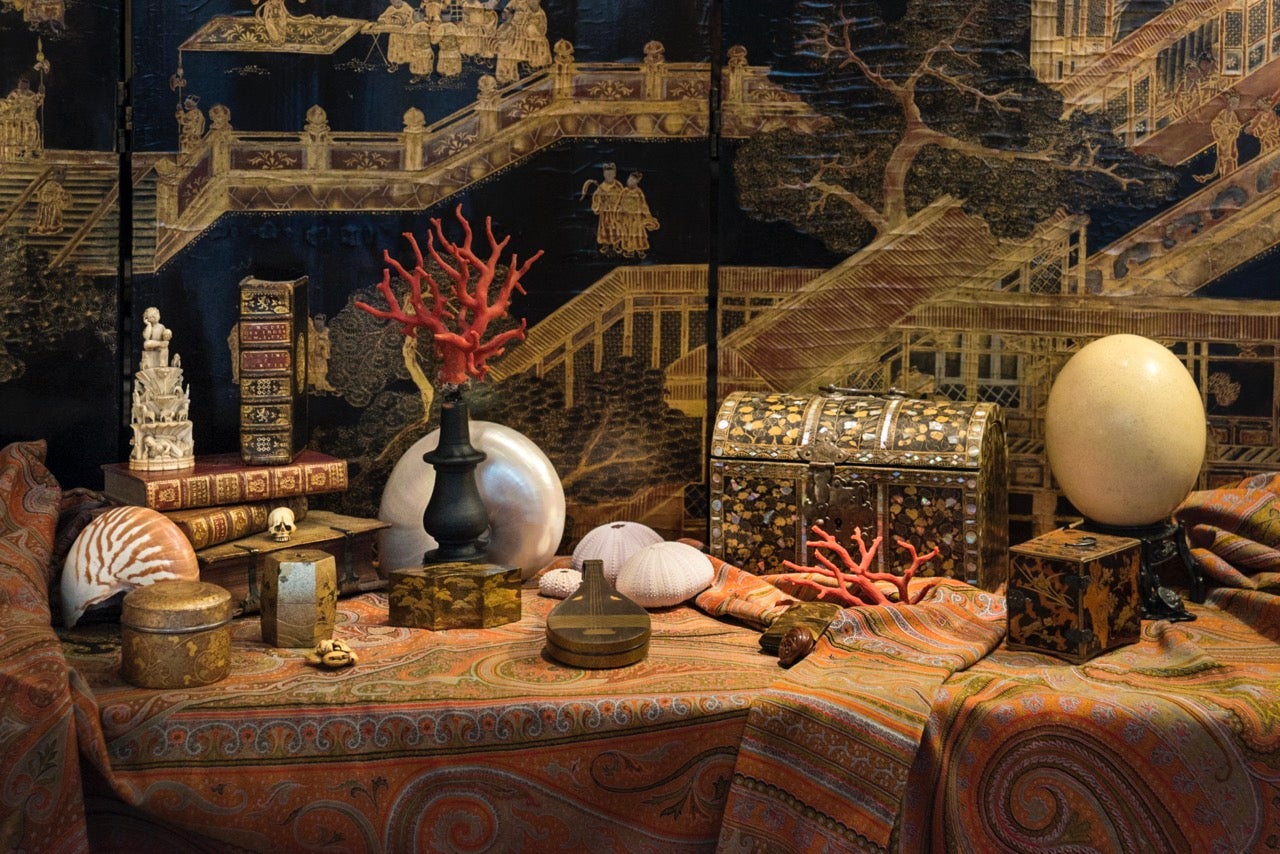
About the Seller
No Reviews Yet
Vetted Professional Seller
Every seller passes strict standards for authenticity and reliability
Established in 2013
1stDibs seller since 2023
Typical response time: Several days
- ShippingRetrieving quote...Shipping from: PARIS, France
- Return Policy
Authenticity Guarantee
In the unlikely event there’s an issue with an item’s authenticity, contact us within 1 year for a full refund. DetailsMoney-Back Guarantee
If your item is not as described, is damaged in transit, or does not arrive, contact us within 7 days for a full refund. Details24-Hour Cancellation
You have a 24-hour grace period in which to reconsider your purchase, with no questions asked.Vetted Professional Sellers
Our world-class sellers must adhere to strict standards for service and quality, maintaining the integrity of our listings.Price-Match Guarantee
If you find that a seller listed the same item for a lower price elsewhere, we’ll match it.Trusted Global Delivery
Our best-in-class carrier network provides specialized shipping options worldwide, including custom delivery.More From This Seller
View AllJapanese okimono sculpture of a lying puppy with its head facing its rear
Located in PARIS, FR
Bronze okimono sculpture with a deep brown patina, of a lying puppy, probably of shiba inu breed, represented with its head facing its rear. This kind of subject is common in traditi...
Category
Antique Late 19th Century Japanese Meiji Metalwork
Materials
Bronze
Japanese Puppy Nestuke in boxwood
Located in PARIS, FR
Netsuke in boxwood representing a puppy with incrusted eyes made of buffalo horns. Its mouth is open, as if it was barking, it also wears a knotted collar and holds a ball between it...
Category
Antique Mid-19th Century Japanese Edo Sculptures and Carvings
Materials
Boxwood
Japanese Monkey Suaka
Located in PARIS, FR
Bronze sculpture of a monkey laying on a golden brass tray adorned with copper
leaves. This sculpture is made of sentoku and shibuchi bronze with a very interesting
suaka patina.
...
Category
Antique Late 19th Century Japanese Sculptures and Carvings
Materials
Bronze
$2,155
Inro Dragon
Located in PARIS, FR
Beautifull inro of six compartments made of black gold, silver and tin lacquer,
representing a dragon on each side, surrounded by black and silver clouds, the inside
is made of nas...
Category
Antique Early 19th Century Japanese Japonisme Lacquer
Materials
Lacquer
$12,009
Japanese Bronze Hawk Ikebana
Located in PARIS, FR
Bronze intended for hanging (? dô kakenanaike, « hanging bronze ») depicting a hawk, placed on a branch. The inside is hollow so a bouquet a flowers can be put inside and thus, serve...
Category
Antique Late 19th Century Japanese Metalwork
Materials
Bronze
Netsuke in the form of a No mask representing the character of Obeshimi
Located in PARIS, FR
Wooden netsuke depicting the Obeshimi mask in Noh theater.
Obeshimi is a demon characterized by thick eyebrows, eyes that seem to protrude from the face and a closed mouth.
Signed ...
Category
Antique Late 19th Century Japanese Meiji Sculptures and Carvings
Materials
Boxwood
You May Also Like
Chinese Ancient Hand Carved Wood Lion Guardian
Located in South Burlington, VT
A Chinese hand carved and hand painted wooden effigy of a fantastic Bixie dating to before Song dynasty 1279 AD.
Please enjoy the beautiful remnants of its aged original swirling painted surfaces. It has been traditionally carved and assembled in three sections. The tail may be a later replacement.
Period: Song dynasty
Dimensions: 6 inches high and 15 inches wide
About Bixie
The “bixie” is a mythological creature commonly thought to be able to ward off evil forces with its magical powers. In fact, its name means “to ward off evil” in Chinese. In the Han dynasty, “bixie” were commonly represented as winged, four-legged beasts, a form that was probably transmitted from Western Asia.
Provenance:
This is from a private collection and were acquired by us along with a larger wooden horse...
Category
Antique 15th Century and Earlier Chinese Antiquities
Materials
Wood
$1,440 Sale Price
40% Off
Large Carved and Painted Temple Lion, Pixiu or Foo Dog
Located in Godshill, Isle of Wight
Large Carved and Painted Temple Lion, Pixiu or Foo Dog
This fierce looking beast dates from the 19th Century, he is carved in wood and was originally painted Much of the paint 1s fad...
Category
Antique 19th Century Folk Art Sculptures and Carvings
Materials
Teak
Antique bronze Opiumweight from Burma
Located in DEVENTER, NL
Material: bronze
4,9 cm high
3,3 cm wide and 4,2 cm deep
Weight: 0.156 kgs
Originating from Burma
18th century.
Category
Antique 18th Century Burmese Sculptures and Carvings
Materials
Bronze
Antique Bronze Opiumweight from Burma
Located in DEVENTER, NL
Material: bronze
4,8 cm high
3,4 cm wide and 4 cm deep
Weight: 0.159 kgs
Originating from Burma
18th century.
Category
Antique 18th Century Burmese Sculptures and Carvings
Materials
Bronze
Antique bronze Opiumweight from Burma
Located in DEVENTER, NL
Material: bronze
5 cm high
3,9 cm wide and 4 cm deep
Weight: 0.159 kgs
Originating from Burma
18th century
Category
Antique 18th Century Burmese Sculptures and Carvings
Materials
Bronze
Antique Bronze Opiumweight from Burma
Located in DEVENTER, NL
Material: bronze
5 cm high
3,3 cm wide and 4,2 cm deep
Weight: 0.160 kgs
Originating from Burma
19th Century.
Category
Antique 19th Century Burmese Sculptures and Carvings
Materials
Bronze
